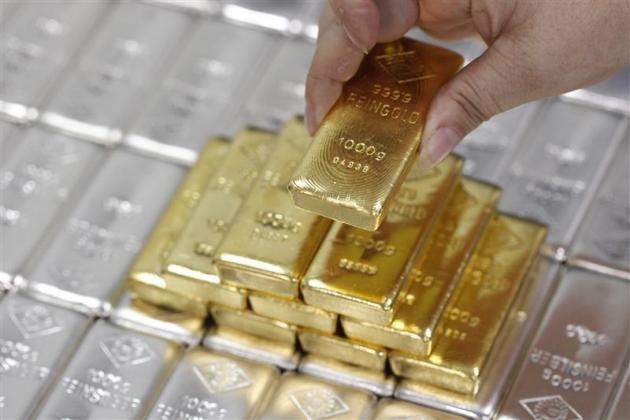The metals markets disappointed in 2014. Global growth concerns weighed on copper and platinum while silver and gold simply appeared to lose interest. There seemed to be little fear of fiat currency defaults in spite of publicly made central bank statements regarding the destruction of certain currency bases in order to spur sovereign inflation levels and stop the downward spiral of disinflation. This week, we'll take an in depth look at the metal markets and tell you what we think the best play is in this complex.
There are two ways to look at the metal markets, subjectively as a store of value and measure of market psychology or, quantitatively through measurable variables. Although we're certainly quantitative by nature, we've always looked at both. However, in order to analyze the market psychology of the market, we had to find a way to quantify that as well. We quantify market sentiment by tracking the makeup of the market's open interest. Open interest measures the total number of outstanding contracts tied to a certain market. This number can be infinite throughout the contract's life but must be drawn down to match the physical supplies or less by the contract's expiration. Finally, the makeup of the market's open interest is calculated weekly by the Commodity Futures Trading Commission's weekly Commitment of Traders report. This report tallies the positions being held by the large speculators (funds and CTA's), small speculators (retail traders), index traders (marked to ETF's) and the commercial traders (producers and consumers of the actual commodity).
Returning to sentiment, we believe that no one knows the value of a given market like those whose lives depend on the production or, end use of the commodity in question. Quantitatively speaking, we analyze the net commercial trader position along with the speed of their purchases and sales relative to the prices being traded. This helps determine the anxiousness commercial traders are feeling and thus, the relative value they feel the current market prices are providing. Furthermore, the greater the percentage of open interest the commercial traders hold, the greater their belief that the prices being traded won't last long at those levels.
We'll start with the copper market as that's the only one with potentially bullish legs. The first chart shows continuous copper futures along with the market's open interest. Tracking the commercial traders' behavior throughout 2014 clearly shows that $3 per pound is the mean value area for the copper futures market.

You can see how the interaction of open interest, price and commercial trader behavior influence each other on the chart below which shows the net commercial trader position along with the commercial trader momentum and the corresponding buy and sell signals generated our discretionary trading signal methodology.

Sometimes an eyeball is worth a thousand words. I believe the interaction between these two charts speaks for itself. We view the commercial traders' buying near $2.50 as extremely supportive even in a world of slowing Gross Domestic Product. There is little doubt that global GDP will slow in 2015. The only real questions are, "How much?" and, "How long?" The commercial traders in industrial products are willing to sit on stores of raw material given the relative value at these prices. While this may not signal a copper rally, it should signal copper's reversion to the $3 per/lb mean price level.
Next, we'll move on to silver, primarily because I want to discuss the gold and platinum markets together as a single unit. The silver market's dominant feature of 2014 was the sell off from above $21 per/oz all the way down to $14 and change. The downward trend was hard for small speculators to deal with. It's easy to see the dramatic selling by the commercial traders through June of 2014. This flies in the face of the relatively modest early decline in open interest. The growing pace of the decline in open interest is indicative of the small speculators getting washed out on the long side as commercial traders' short interest grows with the decline in prices.

Once the market began trading below $18 per/oz we saw commercial traders coming back in to cover the short hedges they'd initiated at much higher prices. This allows them to capture the cash value of the hedge without having to handle the physical product itself as the losses incurred on any physical product will be compensated for by the growing account balance of their futures market position. You can see 2014's trades generated by this methodology on the chart below.

As with most methodologies, nothing is perfect. However, following their actions would've at least kept a small speculator out of the long side of the market through its decline of $35,000 on one futures contract. How much could have been made actually following the signal rather than simply using it as a cautionary measure? Given the volatility of this market, prudence is always warranted. That being said, those who've caught the long side of this rally from below $16 per/oz should consider taking profits or tightening protective stops as this market is currently setup for an official COT Sell Signal.
Finally, we'll move on to gold and platinum which I'd like to discuss briefly, individually but primarily as a pair. The platinum market in some ways is very similar to the copper market in that they are both primarily industrial metals at this point in time with platinum's primary industrial usage being in catalytic convertors. This being the case, commercial traders are keenly attuned to the supply and demand nature of this market. Furthermore, considering the platinum market is about half of the size by open interest of the copper market, there are fewer players and they're easier to track. This can be seen in the consistency of the trading signals posted below throughout 2014.

The primary difference between platinum and copper is the relative value disparity of something costing $3 per/lb versus something that costs well over $1,000 per/oz. Therefore, platinum has the added advantage of being an implied store of value. This is where we transition into the relationship between gold and platinum. It is generally accepted that an ounce of platinum is worth more than an ounce of gold based on the relative scarcity of the two metals. However, there have been several times, some which lasted for an extended period that show that platinum prices can remain depressed below the price of gold for quite awhile. That being said, the commercial trader position in these two markets suggests that this period of parity will be short lived.

First of all, notice that the decline in the platinum market's open interest from the July highs through the October lows continues to fall based on the commercial traders' expectations of lower prices heading into the summer. The commercial traders sold more than 50,000 contracts above $1,400 per/oz headed into the summer's decline. Finally, as the market bottomed between $1,200 and $1,300 per/oz they began covering short positions in earnest. This flood of buying pushed the market higher and turned commercial momentum positive. Finally, as the market has approached the highest of their purchase points, we can see them begin to lay off the contracts like they did in the copper market. Again, realizing a net profit in their futures accounts to offset their losses in the physical market.
This action is a bit contrary to the gold market and provides the basis for the best trading opportunity we see within the metals complex; buying platinum and selling gold as a spread against each other. We've already discussed the mechanics of the gold and platinum spread at length. This week, we're discussing the internal makeup of the markets' participants and why that should propel these markets back towards their normal relationship with platinum trading at a premium to gold.

There are two main points to be made here. First, we've already discussed platinum's relatively greater value than gold. Secondly, the commercial traders have been heavy, heavy sellers of gold on this rally, virtually, returning their position to their before summer sell-off levels. The rapidity of the liquidation of their contracts is worrisome. Furthermore, the rapidly exiting commercial traders must be selling to someone. In this case, it becomes clear that willing buyers are harder and harder to find. Commercial traders have sold more than 25,000 contracts since the beginning of the year while open interest has declined by nearly 37,000 contracts. Healthy rallies see growing open interest. This decline is most distinct in the gold market and that's why we feel gold futures will fall faster than platinum futures and bring the price of platinum back above the price of gold.

Currently, platinum is trading nearly $15 per/oz below the price of gold, both for April delivery. We've executed some of these spreads as deep as $20 under parity. Given the disparate internals between these two markets, we see platinum futures holding steady to higher while expecting gold prices to tumble and bring the spread back in line with its normal pricing structure. Again, given the volatility of today's markets, we are uncomfortable outright shorting gold due to the Swiss bankers, Shinzo Abe and Mario Draghi's combined efforts at global currency devaluation. Therefore, we'll give up some outright profit opportunity in order to afford ourselves a bit more protection in today's confusing world of precious metals trading.





